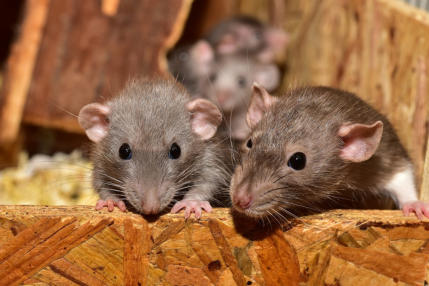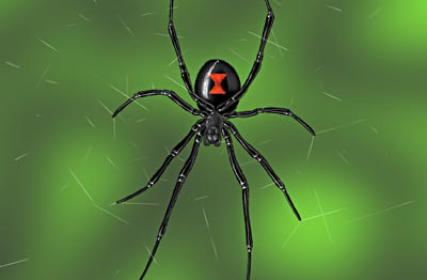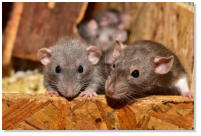SPIDER CONTROL LITTLE ROCK AREA
At Diamond Pest Solutions we provide our customers in the Greater Little Rock Area the assurance that their pest control problems will be handled in the safest, most effective, eco friendly way and done in a professional manner. Diamond Pest Solutions is a fully licensed pest control company. Diamond Pest Solutions offers interior and exterior service programs for residential pest control and commercial pest control customers that may include general pest control, spider control, wasp control, ant control, roach control, rodent control and nuisance wildlife. Feel free to give us a call if you have any questions!
At Diamond Pest Solutions, we are Proud to offer a wide range
of products & services that we are sure will meet all of your
residential and commercial needs.
Diamond Pest Solutions
CAN PROTECT YOUR HOME OR
BUSINESS!
As a trusted Pest Control Company in Central Arkansas, it is our goal at Diamond Pest Solutions to get you the products you
want at a price that you can afford. We proudly serve the Greater Little Rock area, including North Little Rock, Conway,
Russelville, Maumelle and surrounding areas.
If you have any questions about the services we offer, a member of our team would gladly speak with you! Give us a call or
email us today to learn more!
Diamond Pest Solutions

SPIDER CONTROL

Diamond Pest Solutions
CAN PROTECT YOUR HOME
OR BUSINESS!
Click to enlarge
Diamond Pest Solutions

Old Address
8 Concord Dr. Conway, AR 72034




We accept:
Spiders are not insects, they are classified as arachnids. Spiders have eight legs, and are most commonly brown,
grey or black. A spider has no bones but its tough skin serves as a protective outer skeleton.
A spider's body consists of the cephalothorax and the abdomen. Each of these sections has parts attached to it
called appendages. A spider's eyes are on top and near the front of its head. Different species have different
numbers of eyes and the size and position also varies. Most species have eight eyes, arranged in two rows of
four each. Hunting spiders have good eyesight at short distances and their eyesight allows them to form images
of their prey and mates. Web-building spiders have poor eyesight and their eyes are used for detecting changes in
light.
Below the spider's eyes is its mouth opening. Spiders eat only liquids because they do not have chewing mouth
parts. Around the mouth are various appendages which form a short ‘straw’ through which the spider sucks the
body fluid of its victim.
A spider has four pairs of legs, which are attached to its cephalothorax and each leg has seven segments. In
most kinds of spiders, the tip of the last segment has two or three claws. Surrounding the claws is a pad of hairs
called the scopula. The scopula sticks to smooth surfaces and helps the spider walk on ceilings and walls.
Spider’s legs are impervious to pesticides, thus making them difficult to control.
Each species of spider lives a different life. Many kinds of spiders live for only a year. Large wolf spiders live
several years and some female tarantulas have lived for up to 20 years in captivity. Spiders become adults at
different times of the year. Some mature in the fall and then mate and die during the winter. Others live through
the winter, mate in the spring, and then die.
As soon as a male spider matures, it seeks a mate. Most male spiders perform courtship activities that identify
themselves and attract the females. After mating, the female will lay her eggs several weeks or even months
later. The number of eggs that a spider lays at one time varies with the size of the spider. An average sized
female lays about 100 eggs but some of the largest spiders lay more than 2,000 eggs.
One of the most dangerous spiders in this area is the brown recluse. The reason it is so dangerous is that it can
be living right beside you and you will never know it because they do not build conventional webs. There webs
tend to be wispy threads of webs that have no real pattern. They prefer dark undisturbed places and often reside
in very small cramped places such as shoes that have not been worn lately, under furniture and beds and in
clothing that has been left on the floor or hanging undisturbed for long periods. They tend to be noctural hunters
and can move very fast and even hop when necessary. They are feared because their bite dissolves tissue and
can under some circumstances cause major damage by literally eating a hole in the flesh sometimes as deep as
the bone in the affected area.
Black widows are notorious spiders identified by the colored, hourglass-shaped mark on their abdomens. Several
species answer to the name, and they are found in temperate regions around the world.
This spider's bite is much feared because its venom is reported to be 15 times stronger than a rattlesnake's. In
humans, bites produce muscle aches, nausea, and a paralysis of the diaphragm that can make breathing difficult;
however, contrary to popular belief, most people who are bitten suffer no serious damage—let alone death. But
bites can be fatal—usually to small children, the elderly, or the infirm. Fortunately, fatalities are fairly rare; the
spiders are nonaggressive and bite only in self-defense, such as when someone accidentally sits on them.
The animals most at risk from the black widow's bite are insects—and male black widow spiders. Females
sometimes kill and eat their counterparts after mating and thus the name Black Widow. Black widows are solitary
year-round except during this violent mating ritual.
These spiders spin large webs in which females suspend a cocoon with hundreds of eggs. Spiderlings disperse
soon after they leave their eggs, but the web remains. Black widow spiders also use their webs to ensnare their
prey, which consists of flies, mosquitoes, grasshoppers, beetles, and caterpillars. Black widows are comb-footed
spiders, which means they have bristles on their hind legs that they use to cover their prey with silk once it has been
trapped.







New Address
1235 Sturgis Rd. Ste 10 Conway AR 72034

SPIDER CONTROL
LITTLE ROCK AREA
At Diamond Pest Solutions we provide our customers in the Greater Little Rock Area the assurance that their pest control problems will be handled in the safest, most effective, eco friendly way and done in a professional manner. Diamond Pest Solutions is a fully licensed pest control company. Diamond Pest Solutions offers interior and exterior service programs for residential pest control and commercial pest control customers that may include general pest control, spider control, wasp control, ant control, roach control, rodent control and nuisance wildlife. Feel free to give us a call if you have any questions!SPIDER CONTROL

Spiders are not insects, they are classified as
arachnids. Spiders have eight legs, and are
most commonly brown, grey or black. A
spider has no bones but its tough skin serves
as a protective outer skeleton.
A spider's body consists of the cephalothorax
and the abdomen. Each of these sections has
parts attached to it called appendages. A
spider's eyes are on top and near the front of
its head. Different species have different
numbers of eyes and the size and position
also varies. Most species have eight eyes,
arranged in two rows of four each. Hunting
spiders have good eyesight at short distances
and their eyesight allows them to form
images of their prey and mates. Web-building
spiders have poor eyesight and their eyes are
used for detecting changes in light.
Below the spider's eyes is its mouth opening.
Spiders eat only liquids because they do not
have chewing mouth parts. Around the mouth
are various appendages which form a short
‘straw’ through which the spider sucks the
body fluid of its victim.
A spider has four pairs of legs, which are
attached to its cephalothorax and each leg
has seven segments. In most kinds of
spiders, the tip of the last segment has two or
three claws. Surrounding the claws is a pad
of hairs called the scopula. The scopula
sticks to smooth surfaces and helps the
spider walk on ceilings and walls. Spider’s
legs are impervious to pesticides, thus
making them difficult to control.
Each species of spider lives a different life.
Many kinds of spiders live for only a year.
Large wolf spiders live several years and
some female tarantulas have lived for up to
20 years in captivity. Spiders become adults
at different times of the year. Some mature in
the fall and then mate and die during the
winter. Others live through the winter, mate in
the spring, and then die.
As soon as a male spider matures, it seeks a
mate. Most male spiders perform courtship
activities that identify themselves and attract
the females. After mating, the female will lay
her eggs several weeks or even months later.
The number of eggs that a spider lays at one
time varies with the size of the spider. An
average sized female lays about 100 eggs but
some of the largest spiders lay more than
2,000 eggs.
One of the most dangerous spiders in this
area is the brown recluse. The reason it is so
dangerous is that it can be living right beside
you and you will never know it because they
do not build conventional webs. There webs
tend to be wispy threads of webs that have no
real pattern. They prefer dark undisturbed
places and often reside in very small cramped
places such as shoes that have not been
worn lately, under furniture and beds and in
clothing that has been left on the floor or
hanging undisturbed for long periods. They
tend to be noctural hunters and can move
very fast and even hop when necessary. They
are feared because their bite dissolves tissue
and can under some circumstances cause
major damage by literally eating a hole in the
flesh sometimes as deep as the bone in the
affected area.
Black widows are notorious spiders identified
by the colored, hourglass-shaped mark on their
abdomens. Several species answer to the
name, and they are found in temperate regions
around the world.
This spider's bite is much feared because its
venom is reported to be 15 times stronger than
a rattlesnake's. In humans, bites produce
muscle aches, nausea, and a paralysis of the
diaphragm that can make breathing difficult;
however, contrary to popular belief, most
people who are bitten suffer no serious
damage—let alone death. But bites can be
fatal—usually to small children, the elderly, or
the infirm. Fortunately, fatalities are fairly rare;
the spiders are nonaggressive and bite only in
self-defense, such as when someone
accidentally sits on them.
The animals most at risk from the black
widow's bite are insects—and male black widow
spiders. Females sometimes kill and eat their
counterparts after mating and thus the name
Black Widow. Black widows are solitary year-
round except during this violent mating ritual.
These spiders spin large webs in which females
suspend a cocoon with hundreds of eggs.
Spiderlings disperse soon after they leave their
eggs, but the web remains. Black widow spiders
also use their webs to ensnare their prey, which
consists of flies, mosquitoes, grasshoppers,
beetles, and caterpillars. Black widows are
comb-footed spiders, which means they have
bristles on their hind legs that they use to cover
their prey with silk once it has been trapped.


At Diamond Pest Solutions,
we are Proud to offer a wide
range of products & services
that we are sure will meet all
of your residential and
commercial needs.
As a trusted Pest Control Company in Central
Arkansas, it is our goal at Diamond Pest Solutions to
get you the products you want at a price that you can
afford. We proudly serve the Greater Little Rock area,
including North Little Rock, Conway, Russelville,
Maumelle and surrounding areas.
If you have any questions about the services we
offer, a member of our team would gladly speak with
you! Give us a call or email us today to learn more!
Diamond Pest Solutions
CAN PROTECT YOUR HOME
OR BUSINESS!
Click to enlarge





Diamond Pest Solutions
DIAMOND PEST SOLUTIONS



We accept:
Diamond Pest
Solutions CAN
PROTECT YOUR
HOME OR BUSINESS!
Old Address
8 Concord Dr. Conway, AR 72034
New Address
1235 Sturgis Rd. Ste 10 Conway AR 72034















